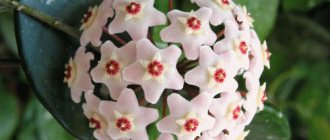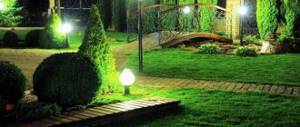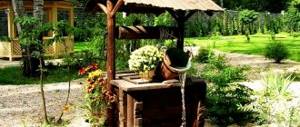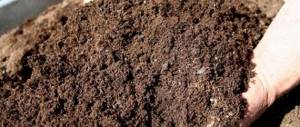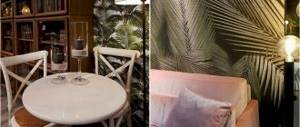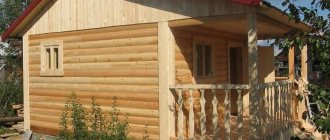Shrubs for hedges
There are many types of trees and shrubs for making hedges. Depending on their natural features, purpose and intended location, they are divided into:
- Fast growing and evergreen.
- Perennial and annual.
- Blooming and berry.
- Tall and border.
The list goes on and on. Let's look at possible and acceptable options for you with descriptions and photos. So that you can easily make your choice.
As we have already said, many plants are suitable for this purpose, having their own advantages, characteristics and disadvantages. Today you will learn about what types of hedges exist and what plants are best suited for them.
For your convenience, let's start with a review of low-growing and medium-growing shrubs, the choice of which is simply huge and large. And we will continue in ascending order, to a description with photos of the tallest plants for hedges that can reliably cover your area from prying eyes. And they will do it colorfully, stylishly and uniquely.
Types of plants for perennial hedges
Today, the variety of crops suitable for creating living fences is so great that it is simply impossible to describe all types. However, there is a division of such plants into large groups: conifers, deciduous shrubs and trees, vines. Each of these groups is rich in particularly striking representatives that can become the basis of a beautiful perennial green fence. Below we will look at each of them in more detail.
Conifers
It is perhaps difficult to find more suitable plants for hedges than conifers. Firstly, they grow quite quickly, which means you can get a fence faster. Secondly, conifers (especially popular types and varieties) are decorative, so a living fence will look neat. Thirdly, such crops are not too whimsical and easy to care for.
And, of course, if you choose frost-resistant varieties, you won’t have to worry about the health of your evergreen beauties. The most popular among gardeners are thuja, spruce, juniper, and balsam fir. They are ideal for creating a fast-growing perennial hedge. Also, sometimes gardeners plant yew, cypress, etc.
Hedge – Brilliant cotoneaster
Most often, brilliant cotoneaster . An unpretentious but slowly growing plant with a dense crown. The height of such a fence can reach 2 meters. The foliage is elegant throughout the season (see photo).
- In spring and summer it is dark green, and in autumn it turns purple.
- Flowering begins in late May - early June and continues for a whole month. At this time, the bushes are covered with pink fragrant flowers, which attract bees from all over the area.
- Red berries that ripen in mid-October also look very decorative.
Cotoneaster is very unpretentious and grows well in both sun and shade. Tolerates frost, drought and gas pollution, and is undemanding to the soil. Long-lived. With proper care, the lifespan is up to 50 years.
But there is one drawback - slow growth.
You can start formative pruning in the second year. But the cotoneaster hedge will acquire its finished appearance in 5-8 years.
Lavsana cypress
Cones on flat shoots, 40-60 cm high, give a special charm. Does not require cutting, but if necessary, it can easily be trimmed.
Hedge in the Moscow region
There are many types of plants for planting in the Moscow region; all that remains is to decide what height of hedge you prefer.
Green walls
For those who have decided to literally isolate themselves from the outside world and surround themselves with an impenetrable fence more than 2 meters high, you need to pay attention to the plant species described below.
Serbian spruce is an excellent evergreen tree for creating a tall hedge. It can reach a height of up to 5 m. The crown diameter of an adult tree is about 8 m. This type of spruce is not at all whimsical and does not need pruning. The needles have a rich shiny dark green color. The variety withstands winter frosts and grows well in urban environments.
Serbian spruce is a whole group of spruce varieties with a radically different appearance. The photo shows a miniature variety of Serbian spruce - Karel.
Fruit trees, namely the Nedzvedsky apple tree, look good in any area due to their unique crown, the color of which is rich green on top and purple below. The apple tree is especially beautiful during flowering. It has lush purple flowers. This variety bears fruit abundantly with small red apples. The tree is not tall , rare specimens reach a height of 8 m. But it is distinguished by its high growth rate, life expectancy, unpretentiousness and good resistance to diseases, pests and frost.
Thuja Brabant is a conical tree, reaching a height of 4 m in a fence, and up to 20 m in a free planting. With sufficient watering per year, the crown of the thuja grows in width by no more than 10 cm, and in height by an average of 30 cm. This tree with a cone-shaped crown is widespread in landscape design because of its rich bright green color and unpretentiousness. If you want to grow a branched coniferous plant, then regular pruning will help.
Thuja occidentalis "Brabant" responds well to pruning. The photo shows a fairly free version of a hedge made from this thuja, but it allows you to set even more precise shapes.
Hornbeam has many species that are successfully used in landscape design. But the most popular and more suitable for the Moscow region is the common hornbeam. It not only creates an impenetrable hedge, but also perfectly protects the area from noise and dust. This particular variety is unpretentious, easy to mold and resistant to winter conditions. In addition, the common hornbeam is not susceptible to diseases and is resistant to pests.
An example of a creative green hornbeam sculpture.
Hawthorn is a traditional plant in Russia, used as a hedge. The most commonly used species is Prickly, which has powerful thorns and an oval crown. The plant reaches a height of 5 meters. The variety blooms in May with five-petaled white or pink flowers, while the fruits ripen at the end of September and are purple in color with yellow flesh.
An example of a tall hawthorn hedge.
Green-fleshed hawthorn . This variety is highly valued in landscape design for its dark, dense greenery, delicate white inflorescences and long spines (up to 1.5 cm). It can grow up to 8 m. It got its unusual name thanks to its dark fruits with green flesh. It begins to bear fruit at the age of 9 years.
Low hedges
To create a small green fence, any variety of barberry . They are equally unpretentious and resistant to any climatic conditions. Thunberg barberry stands out for its decorative qualities . Its small leaves can have different colors: yellow, red, pink and even brown. Another feature is that it is not susceptible to fungal diseases. But this variety is a slow-growing shrub with inedible fruits, reaching a maximum height of 1.5 m.
Thunberg barberry hedge
Common privet is an unpretentious shrub that grows from 2 to 4 m. Its leaves are oblong in shape and shiny dark green in color. Flowering begins in early July with small cream flowers with a pleasant aroma. The fruits ripen at the end of September and acquire a small size and glossy black color. In common people they are called wolfberry. Privet is easy to shape, but also looks good growing wild.
A hedge of common privet.
Thuja Occidentalis , one of the varieties of which is described above, has high decorative qualities. For hedges, you can use not only the Brabant species. But also, for example, Smaragd. Reaches a height of no more than 2 meters and lends itself well to processing. This variety of thuja is an evergreen plant with a neat bright green crown. It tolerates winter and many plant diseases well.
Decorative living borders
Alpine currants are perfect for creating a small hedge up to 1 meter high . It tolerates cold and wind well, but does not like high temperatures. If you are looking for the best way to make garden figurines of varying complexity, then this particular variety of currant is perfect for this. You can find subspecies with small green or large yellowish jagged foliage.
Deytsia
is a beautiful shrub with a lush crown and delicate flowers of various colors. The most common are white and pink. This is a very heat-loving plant, so it needs to be planted in areas well lit by the sun and protected from the wind at a distance of about 2 m from each other. She also does not like waterlogging, so in September they stop watering her altogether. Deytsia loves fertilized soil, but it is best to feed it during the flowering period.
Boxwood
The evergreen shrub can easily grow even in the middle zone. But where frosts can be stronger than -20°C, it requires covering with burlap for the winter. But this moment is even difficult to attribute to his shortcomings. Rather, this can simply be called its feature.
Species with variegated leaves are less frost-resistant and grow only in the southern regions of Russia. Their height usually does not exceed 1.5 m, but in subtropical climates 5-meter evergreen walls can be found.
Just think! Evergreen boxwood lives up to 500-800 years!
- Drought resistant.
- Not demanding on watering.
- Remains decorative all year round.
- Easily adapts to drought.
It can grow in the shade and is absolutely not picky about soil.
Euonymus Fortune
An extremely low-growing, ground-growing shrub with light green leaves with a white border.
- Drought-resistant, tolerates pruning well.
- The emerald foliage of the euonymus turns purple-red in the fall.
- Additional charm is given by the fruit-boxes of an unusual shape, which acquire a rich color by autumn.
Almost all types of euonymus are shade-loving shrubs for hedges , but there are also varieties that are resistant to bright light. In 2-3 years, Fortune's euonymus will help create a luxurious fence just over a meter tall.
Loves watering and nutrient-rich soil with a neutral reaction. However, it is worth noting that most varieties do not tolerate gas and dust.
With good care and timely feeding, it is exceptionally elegant.
Advice! If you have a desire to make a fabulously beautiful unique fence, then Fortune’s euonymus is the best choice. Propagated by both seeds and cuttings.
1. Fast-growing or long-growing? ↑
To create a beautiful trimmed fence, you first need to decide whether you need fast-growing shrubs or whether you have enough patience and time to wait and watch slow-growing ones.
Slow-growing hedges include plants whose annual growth is no more than 50 cm in height. Sometimes it takes decades to grow a green wall from them, but it is from this category that the most beautiful and durable trimmed fences are obtained.
Medium-growing ones add from 50 cm to 1 m in height annually. These are mainly deciduous plants.
Chubushnik Crowned
It is often called garden jasmine, but this is not true at all. Mock orange is valued primarily for its incredibly fragrant white or pink flowers that decorate the plant from May to July.
A hedge made of Venechny mock orange can reach three meters in height, reliably covering the area from prying eyes.
- The leaves turn a beautiful and colorful lemon yellow color in the fall.
- It is light-loving, but despite this, it tolerates partial shade very well.
- Chubushnik Crown is quite frost-resistant.
- Loves fertile light soils.
It grows very quickly and easily takes the required shape.
To increase soil fertility on your site: Do-it-yourself compost - what and how to make it from: preparation methods + video
In areas where frosts do not exceed -25°C, it is possible to plant such types of mock orange as Fluffy, Caucasian and Shrenka.
On a note! There is also an odorless mock orange, which is suitable for those who do not like strong odors, but dream of having beautiful flowering shrubs for a hedge on their site.
- free-growing ↑
- Amur barberry,
- barberry and Thunberga,
- weigela,
- hydrangea,
- action,
- shrubby cinquefoil,
- rhododendron,
- white snowberry,
- oak-leaved spirea,
- Douglas and Japanese spirea,
- needle hips,
- rosehip Daurian and wrinkled,
- forsythia.
Cotoneaster multiflorum, holly and others
We can safely say that a cotoneaster hedge can satisfy almost any taste. It is not picky about soil and moisture, however, in the first year of cultivation it requires timely watering. There are quite a few other varieties that are very often used in the construction of green fences:
- Cotoneaster multiflorum. It can reach 2-3 m. The leaves are silver-green in spring, dark green in summer, and turn red in autumn. The flowers are white, collected in dense corymbs. Bright red berries decorate the bush from August to late autumn. Less frost-hardy, but more light-loving than brilliant cotoneaster.
- Holly . Just like brilliant, it comes from Northern China. The flowers are red and the berries are black, remaining on the bush until the next harvest. The leaves are glossy, dark green in color. A worthy representative of his family.
- Cotoneaster is entire . Shiny rounded leaves and bright red berries make the hedge very elegant. Not picky about soil. All this together makes it very popular among lovers of beautiful green fences on their site.
- Willow leaf . This comrade is distinguished by rather long, pointed, wrinkled leaves. The flowers are white-cream, fragrant. It usually reaches four to five meters in height, so it can safely boast of an excellent opportunity to hide your entire site from unwanted views behind your wall.
- Spreading cotoneaster. Two-meter bushes with long clusters of white flowers in early summer and red berries in August-September, coupled with shiny dark green leaves, look very elegant throughout the season.
Advice! All types of cotoneasters can be grown from seeds, but to get quick results it is better to plant cuttings or layering.
- medium height ↑
- chokeberry,
- Amur barberry,
- white turf,
- caragana tree or “yellow acacia”,
- vesicular carp "Diabolo",
- the plum is prickly and splayed,
- Alpine and golden currants,
- mock orange coronata of the hydrangea family,
- needle hips.
Syrian hibiscus
An amazingly beautiful plant with a variety of flower colors will serve as a wonderful decoration for your garden.
- It blooms throughout the summer, despite its southern origin. Therefore, it is simply the best solution for those who plan to decorate their site with beautiful flowering shrubs .
- Since it easily tolerates frosts down to -22 degrees, it feels great in the middle zone.
Thuja hedge
A real queen! An evergreen plant with elegantly shaped needles. Tolerates pruning well. Quite unpretentious, but does not tolerate stagnant moisture. It grows and retains its decorative effect for many years, which is especially important for those who do not like frequent changes in their area. Do you want consistency? Choose thuja! As they say, set it and forget it.
It can grow up to 5 m in height, creating a dense wall, which allows it to cover the area from prying eyes not only in summer, but also in winter.
Thuja varieties for hedges
- It is best to plant thuja Brabant , which tolerates frosts without problems and grows 35 cm in height in a year.
- Thuja Smaragd creates a very dense wall and does not require frequent pruning. Therefore, it is great for those who do not have any skills in caring for ornamental plants and in their formation. But it grows very slowly, which is its only small drawback. But Thuja Smaragd does not change the color of its needles at all depending on the time of year. Therefore, it will delight you with its luxury and beauty steadily and continuously.
- Thuja Columna grows up to 7 m, growing much faster than Smaragd. This, in principle, is their essential difference. It also remains green in winter.
- Holmstrup Perfect for beginners because they do not require special care or any skills. You can cut it only once every 2 years. The Tui Holmstrup bush, up to 3 m high, looks corrugated due to the location of its branches.
- Thuja Sunkist is simply a luxurious beauty, one might say “royal person”. It has a golden crown that remains decorative in winter. If you love thujas and also want to see beautiful plants of golden shades on your site, then Sunkist is the best solution.
Hedge in central Russia
Central Russia has a very harsh climate, so it is better to choose plants for hedges that are unpretentious and resistant to harsh weather conditions.
High fences
Norway spruce and Blue spruce grow well in this area . Both of these species are highly resistant to frost and wind. The first type is distinguished by a cone-shaped crown, reaching a height of more than 5 m and sickle-shaped needles. Prickly or Blue spruce is known for the interesting color of its needles: from bright blue to bluish-green. Does not tolerate too fertile soil and a large layer of snow on the branches.
Blue spruce hedge
Juniper Virginia is very similar to a coniferous tree, but differs in small needles - no more than 2 mm. It has a pyramidal and dense crown, which thins out over time in continuous planting. But this can be corrected by planting shade-loving herbs.
Juniper virginiana Gray Owl
Medium height hedge
In this climatic region, any types of barberry, blackberry, raspberry, hawthorn and spirea . The Kazatsky juniper grows especially well , which is a shrub whose height reaches no more than 1.5 meters. It is usually used in solitary plantings.
The blackberry hedge is in a “wild style”, but the bushes can look quite neat.
Mock orange , or jasmine as it is often mistakenly called, is a lush deciduous shrub with delicate flowers of white, cream or soft pink with a aroma of varying intensities. The leaves are small, matte, light green. This is a fairly winter-hardy shrub with a powerful root system, although it loves sunny places for planting.
"Curly" hedge
Maiden's grape is a fast-growing, climbing perennial plant with lush, dense green foliage of a bizarre shape, turning from bright red to lemon yellow in autumn. It is very unpretentious, but is capable of filling a huge area with its sprouts. For those who do not know how to make a hedge with their own hands or are creating it for the first time, then maiden grapes are an excellent solution.
Five-leaf maiden grape 'Veitch Boskoop'
A beautiful decorative vine is created by common ivy . It can decorate any fence or building. Refers to slow-growing and shade-tolerant plants that require fertile soils. There are many species that are equally resistant to harsh weather conditions, but differ in the shape and color of the foliage and inflorescences.
Fence screen made of common ivy
High enclosing green fences
Excellent performance of several functions:
- Snow retention.
- Protection from prying eyes and unauthorized entry.
- Protection from noise, gases and dust.
- Wind containment, antiseptic barrier.
The height of such a fence can be from two to five meters. The planting method is also different:
- Single row.
- Two- and three-row.
- Single-tier and multi-tier.
- Free growing and trimmed.
Yew
An evergreen coniferous plant, decorative all year round. Especially in autumn - with bright red fruits against the background of emerald needles.
- It has a columnar crown, up to five meters high.
- Not only drought-resistant, but also durable. After all, its lifespan is calculated in millennia!
- It cuts well and is wind resistant.
Attention! The fruits are poisonous, so keep away from children.
Irga
A fast-growing berry shrub for hedges , reaching a height of 5 meters. It produces abundant growth, forming impenetrable thickets.
- Decorative in spring, shrouded in a white cloud of honey-bearing flowers.
- In summer it displays delicious berries of various shades: from pink to dark purple, almost black.
- And in the fall it is decorated with gorgeous foliage in bright yellow, red and purple.
- Since irga grows incredibly quickly, in 3-4 years you can get a luxurious dense hedge of a fruit bush .
- It is a long-lived plant and can bear fruit for up to seventy years.
- Tolerates haircuts well.
- Irga is quite unpretentious in care, but loves loose soil and does not tolerate high groundwater.
But not only that, irga is also incredibly tasty and healthy! More details about this in our material on Yandex Zen: Place the irgu on your site, and it will help you preserve your health!
Hawthorn blood red
Hawthorn is an excellent solution for those who cannot boast of soil fertility on their site. It grows not just on any, but even on the poorest soils.
- It produces many shoots, forming a continuous impenetrable wall.
- Winter-hardy.
- Suitable for curly haircuts.
- Bright healing berries hang on the bushes in winter, attracting birds.
If you need an unpretentious hedge, then hawthorn will be an excellent solution.
Bladderwort viburnum
The spreading crown amazes not only with its density, but also with its luxury.
- The foliage in autumn, depending on the variety, turns bright yellow or red.
- It tolerates poor soils well, as it is very unpretentious and drought-resistant.
- The fruits are not poisonous, so there is no need to worry about the health of children.
Interesting on the topic: Lawn care in autumn - preparation for winter: fertilizing, fertilizers, mowing, watering
Plants for fast and long-lasting results
To quickly create an eco-fence, you can use low-growing (about 1 meter in height) and medium-growing (2-3 meters in height) shrubs, evergreen conifers, climbing vines and even trees. At the same time, you need to understand that if you use conifers, then in any case there will not be such a quick result as with shrubs.
Nevertheless, experts recommend several representatives of coniferous plants - record holders for annual growth - for evergreen hedges. These include berry and Canadian yew, thuja occidentalis and juniper.
Green fence made of thuja
These species are ideal both for uniform plantings and for multi-tiered compositions as a background for low-growing shrubs. Planting material for coniferous plants is taken at the age of 5 years; it is preferable to purchase seedlings with a closed root system.
We invite you to familiarize yourself with the production of tar at home
Below are the best options for a fast-growing hedge with basic characteristics.
Bladderwort viburnum
Forms a lush crown with spreading branches. It reaches a height of 3 meters. The leaves are large and carved, depending on the variety, and may have a lemon or purple color, a brownish or purple tint.
It reacts negatively to lime content in the soil and does not tolerate waterlogging (heavy soils require drainage). It is photophilous, frost-resistant, but in severe winters the tips of young shoots may freeze, and it is resistant to gas contamination and dust.
The natural appearance of the plant is a spreading, fountain-shaped bush. Immediately after planting, the top is trimmed; in the first years, the side shoots are shortened by several centimeters to obtain a powerful fluffy bush.
Derain white
Has a spreading crown. The height exceeds 2.5 meters. In addition to decorative leaves with a light border, it is attractive in spring with fluffy inflorescences of white or cream color.
Grows on any soil. Growing in Siberia, it perfectly withstands the vagaries of nature, but does not tolerate drought well and is shade-tolerant. Pruning begins the next year after planting and is carried out twice a season to maintain the correct shape. Without pruning, the bushes become bare below and look sloppy.
Forsythia ovate
Spreading shrub with early flowering: yellow flowers bloom before the leaves and densely cover the shoots.
Prefers light, breathable and calcareous soils. It has good winter hardiness and drought resistance, and is photophilous. Adult plants are pruned after flowering to developed buds.
Hydrangea
An upright growing shrub up to 2 meters high with large spherical inflorescences. Demanding on soil fertility and moisture. Light- and heat-loving; shelter is required in the northern regions. Does not require formative pruning.
Barberry
It is very decorative all year round, has long spines, and is represented by dwarf and tall forms. Unpretentious. You can select varieties for different growing conditions. Easily adapts to any shape. Pruning is carried out after flowering and at the end of summer.
It has a compact bush up to 2 meters high with thorny shoots. In the spring it is beautiful with numerous white flowers, in the summer with dark green, purple or bright red leaves, and in late autumn with blue “ball” berries. Grows on any soil. Frost-resistant, tolerates shade well. The bush turns out dense and neat without frequent pruning.
Rose hip
A medium-sized thorny bush, very attractive during the flowering period. Does not tolerate stagnation of water and close groundwater. Grows well in different climate zones. Formative pruning is carried out annually in the fall after leaf fall.
Hawthorn
Tall thorny shrub with abundant flowering. Any soil is suitable, including poor and heavy clay soils. Frost-resistant and shade-tolerant. Without pruning, it does not lose its decorative effect. The planting can be formed to any height. In practice, an impenetrable solid wall is created by merging the side branches of neighboring bushes.
climbing vines
Maiden grapes
Liana with large beautiful leaves. It is undemanding to soil types, but in the first years it responds well to fertilizing and fertilizers. Frost-resistant, rarely affected by diseases and pests, shade-tolerant.
Shaping involves tying and guiding the vines. Rapid growth requires mandatory pruning in the first year after planting to remove protruding and overgrown shoots. You should also periodically sprinkle compost on exposed growing roots.
Garden ivy
Evergreen liana. Prefers fertilized and moisture-absorbing soils. It does not like the sun; young plants must be covered for the winter. Autumn pruning of “loose” and dry elements is required, as well as shortening of shoots to obtain a lush hedge.
Clematis
We invite you to familiarize yourself with Pansies, annual or perennial flowers
A climbing plant with long and bright flowering, suitable for creating a hedge with a height of 1 to 2 - 3 meters (depending on the variety). Prefers well-drained loams. Light- and moisture-loving, in the middle zone they require shelter.
Pruning depends on the varietal group. In some cases, they use pruning of faded shoots under the first developed bud, in others - autumn pruning of young growth at a distance of about 30 cm from the old wood.
Common hop
A powerful vine with bright green leaves, attractive in its own way during the flowering and fruit formation period. Unpretentious and very aggressive, light-loving. Requires strong support and regular pruning to control the spread.
Trees
Purple willow
A low (up to 1.5 meters) bush with a rounded crown and silvery leaves. Undemanding to fertility, tolerates waterlogging well. Light-loving, drought-resistant, has good winter hardiness. With the help of formative spring pruning, you can create low hedges of any shape.
Holly willow
Reaches a height of about 8 meters. Even poor soils are suitable for it. Adapts well to growing conditions. Mature plants are trimmed at the beginning and end of the season.
White acacia
It is valued for its graceful leaves and snow-white inflorescences with a pleasant aroma. Grows on poor and saline soils. Drought-resistant, heat- and light-loving, does not tolerate harsh winters. Pruning is carried out to limit growth and activate branching; without regular care, it turns into thickets and produces numerous shoots.
What to choose from all the variety? A matter of taste. Ornamental shrubs will become not only a barrier or a means of zoning, but also an effective decoration of the garden.
Fruit-bearing, fast-growing shrubs for hedges will not only decorate, but also bring benefits in the form of healing berries. However, with such cultivation with frequent haircuts, you should not expect large yields. If you want to make jam from hawthorn or barberry for the whole family, it is better to plant a separate bush and care for it accordingly.
The fastest growing hedge will be made from vines (grapes, hops), and in a short time you can form a high and dense eco-fence. But for vertical growth, vines require support, which must be quite strong in order to withstand the growing weight of powerful shoots over the years. Rapid growth requires regular and proper pruning to prevent the plant from becoming all over the place.
Trees are also suitable for long-lasting plantings. Willow and white acacia give very good annual growth and quickly reach the desired height. A hedge made of them does not have to be high - with the help of pruning you can easily change the natural appearance of the plant.
